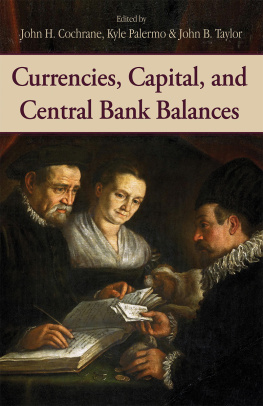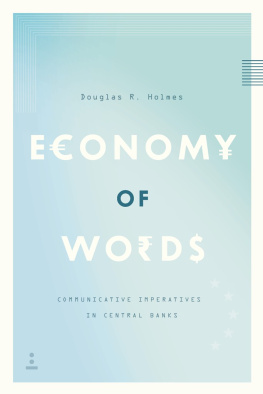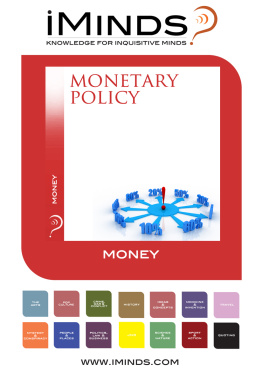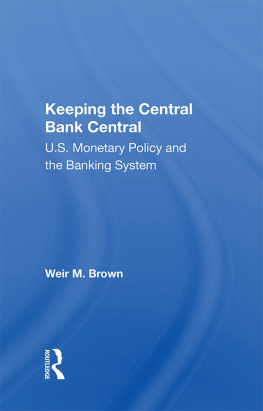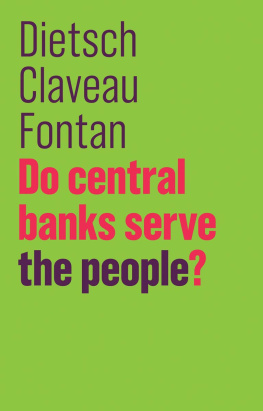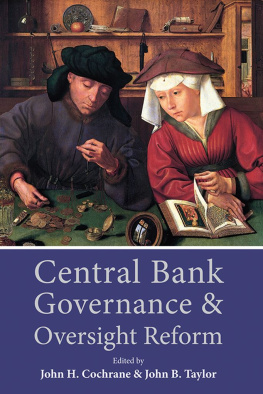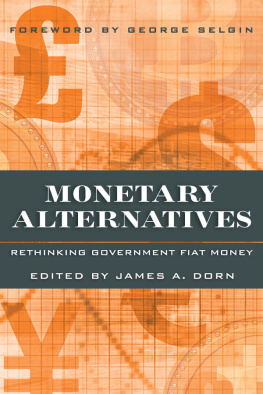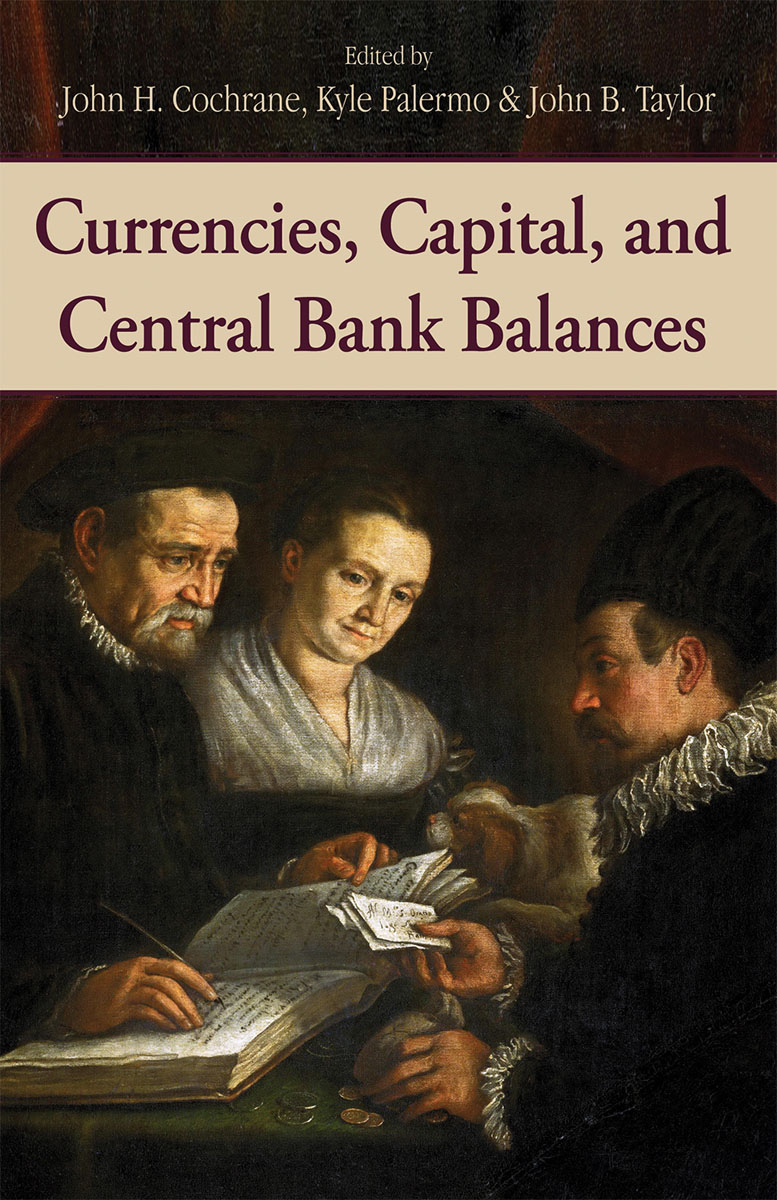
ADVANCE PRAISE FOR
Currencies, Capital, and Central Bank Balances
Its hard to imagine a better brief introduction to the state of the art on domestic and international monetary-policy research, framed so as to be accessible to policy makers as well as scholars. Highly recommended.
Barry Eichengreen, George C. Pardee and Helen N. Pardee Professor of Economics and Political Science, University of California, Berkeley
This volume, collecting insightful, innovative, and often provocative contributions from distinguished academics and high-level central bankers, is the one-stop shop for understanding the practice of modern monetary policy. As central banks extract themselves from a decade of unconventional policy, they have expressed a willingness to reexamine the implementation, conduct, and communication of their policies. This is the book they should consult first for ideas on how to rebuild their monetary policy frameworks.
Carmen M. Reinhart, Minos A. Zombanakis Professor of the International Financial System, Harvard Kennedy School
In the wake of the global financial crisis, central banks in advanced economies embarked on unconventional monetary policies that left them with vastly swollen balance sheets. At the same time, as central bank asset purchases pushed domestic investors to buy emerging-economy assets, the resulting capital inflows proved hard to manage for the receiving economies. Now, as the Fed and ECB normalize their monetary policies and shrink their balance sheets, the pressures on emerging market economies are reversed. How can advanced-economy central banks best return to more moderately sized balance sheets, and to what extent should they? And can emerging markets handle the repercussions entirely through conventional policy levers, or would some forms of capital flow interventions also be useful? This book is an essential guide to the issues.
Maurice Obstfeld, University of California, Berkeley, and former chief economist, International Monetary Fund
This book takes on some of the most difficult and contentious issues surrounding central banking in the postfinancial crisis world, giving candid and thoughtful perspectives from leading policy makers and academics. To what extent are todays central banks, with their massive balance sheets and expanded regulatory powers, suffering from mission creep that might ultimately undermine their independence? Should central banks exhibit artful discretion over international capital flow controls, or would the world system work better if they were bound by rules? Generally quite accessible, the self-contained individual chapters and discussions should be useful for students, researchers, and practitioners alike.
Ken Rogoff, Thomas D. Cabot Professor of Public Policy and Professor of Economics, Harvard University


The Hoover Institution gratefully acknowledges the following individuals and foundations for their significant support of theWorking Group on Economic Policyand this publication:
Lynde and Harry Bradley Foundation
Preston and Carolyn Butcher
Stephen and Sarah Page Herrick
Michael and Rosalind Keiser
Koret Foundation
William E. Simon Foundation
John A. Gunn and Cynthia Fry Gunn

With its eminent scholars and world-renowned library and archives, the Hoover Institution seeks to improve the human condition by advancing ideas that promote economic opportunity and prosperity, while securing and safeguarding peace for America and all mankind. The views expressed in its publications are entirely those of the authors and do not necessarily reflect the views of the staff, officers, or Board of Overseers of the Hoover Institution.
www.hoover.org
Hoover Institution Press Publication No. 697
Hoover Institution at Leland Stanford Junior University,
Stanford, California 94305-6003
Copyright 2019 by the Board of Trustees of the Leland Stanford Junior University
All rights reserved. No part of this publication may be reproduced, stored in a retrieval system, or transmitted in any form or by any means, electronic, mechanical, photocopying, recording, or otherwise, without written permission of the publisher and copyright holders.
For permission to reuse material from Currencies, Capital, and Central Bank Balances, ISBN 978-0-8179-2234-4, please access www.copyright.com or contact the Copyright Clearance Center, Inc. (CCC), 222 Rosewood Drive, Danvers, MA 01923, 978-750-8400. CCC is a not-for-profit organization that provides licenses and registration for a variety of uses.
Efforts have been made to locate original sources, determine the current rights holders, and, if needed, obtain reproduction permissions. On verification of any such claims to rights in the articles reproduced in this book, any required corrections or clarifications will be made in subsequent printings/editions.
Hoover Institution Press assumes no responsibility for the persistence or accuracy of URLs for external or third-party Internet websites referred to in this publication, and does not guarantee that any content on such websites is, or will remain, accurate or appropriate
First printing 2019
26 25 24 23 22 21 20 19 9 8 7 6 5 4 3 2 1
Manufactured in the United States of America
The paper used in this publication meets the minimum requirements of the American National Standard for Information SciencesPermanence of Paper for Printed Library Materials, ANSI/NISO Z39.48-1992. 
Cataloging-in-Publication Data is available from the Library of Congress.
ISBN-13: 978-0-8179-2234-4 (cloth)
ISBN-13: 978-0-8179-2236-8 (EPUB)
ISBN-13: 978-0-8179-2237-5 (Mobipocket)
ISBN-13: 978-0-8179-2238-5 (PDF)
Contents

International Rules of the Monetary Game
Prachi Mishra and Raghuram Rajan |
Dollar Dominance in Trade and Finance
Gita Gopinath |
Introduction
George P. Shultz |
Managing Capital Flows: Toward a Policy Makers Vade Mecum
Jonathan D. Ostry |
The IMFs Institutional View: A Critique
Sebastian Edwards |
Capital Flows, the IMFs Institutional View, and an Alternative
John B. Taylor |

Next page
